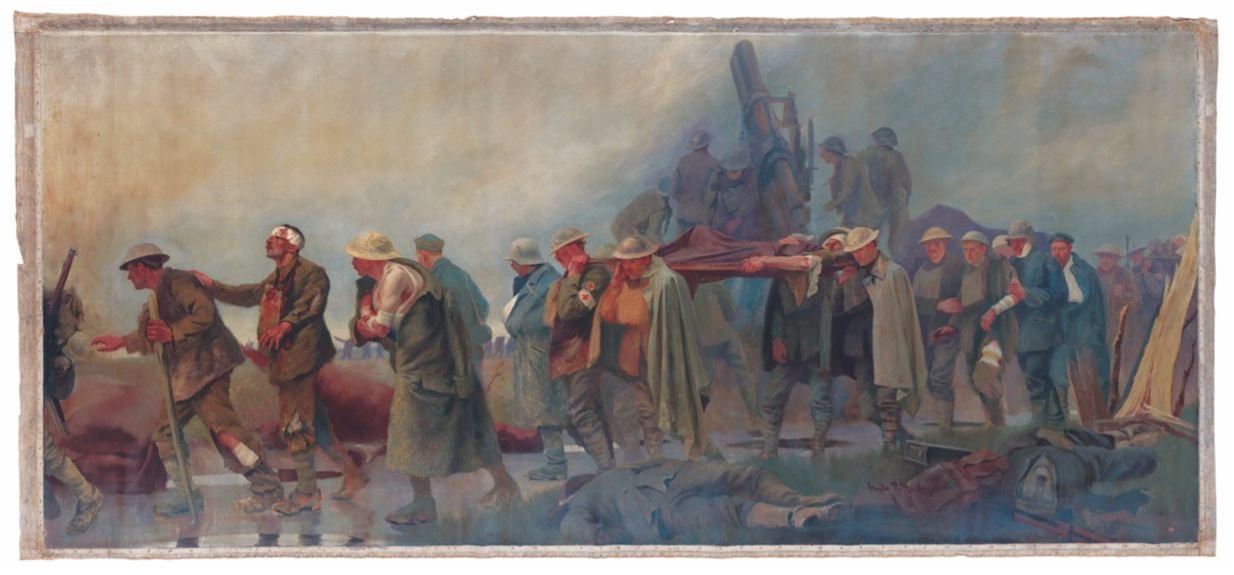At War
‘I was suffocating. I was on fire and no one could help me.’
Falklands War veteran Simon Weston, burns survivor of the 1982 bombing of RFA
Sir Galahad.
 Haydn Reynolds Mackey, World War I: the Royal Army Medical Corps on Active Service. Wellcome Collection CC-BY.
Haydn Reynolds Mackey, World War I: the Royal Army Medical Corps on Active Service. Wellcome Collection CC-BY.
War has dominated the stories told about ‘being British’, but these tales have often hidden the scale of destruction and the people who are part of the national story. The 1800s saw injuries caused by gunpowder and, once technology developed, the steam used to power warships. Over the next 100 years weapons were designed that caused chemical or radiation burns. However, fire has been one constant throughout - and from the twentieth century onwards this threatened civilians and soldiers alike.
It is difficult to establish how many people have sustained burn injuries in warfare since 1800, mainly because figures are incomplete and skewed. For example, surviving First World War records suggest that 88% of burns were ‘accidental’ – incidents like petrol fires and spilling boiling water – but countless 1914/18 documents are missing. Moreover, some injuries are hidden: mustard-gas burns are concealed by the catch-all term ‘gas injured’.
What we do know is that where people were injured changed as much as how. The nineteenth century witnessed the Napoleonic Wars (1803-1815) and an empire-hungry Britain. Army and navy forces fought abroad and off-shore and on distinct battlefields, meaning burns injuries happened on land and sea. With the twentieth-century introduction of aircraft, burns also occurred in the sky, and the ability to drop bombs meant that civilians anywhere were now on the frontline of war burns.
The World Wars transformed plastic surgery. Artists – like Diana Orpen, who worked during the Second World War (1939-1945), and drew this portrait – recorded the multiple operations that transformed the appearance and function of burns-scarred hands and faces.
Courtesy of the British Association of Plastic, Reconstructive and Aesthetic Surgeons
Incendiary bombs, like the 1993 Irish Republican Army (IRA) bomb below, have been a feature of war and terrorism in Britain. For example, in Northern Ireland in January 1980 an IRA incendiary exploded prematurely. The Dunmurry Train Bombing incinerated three men, including an IRA operative and civilians, student Mark Cochrane and Belfast accountant Max Olorunda. Another IRA member sustained extensive burns but survived.
© Imperial War Museums (MUN 64)
In 1872, a boiler exploded on HMS Thunderer. Ship’s surgeon William Smart recorded 45 deaths and 35 injuries, many involving burns. Using techniques developed by black indentured labourers employed sugar boiling on the East-African island of Mauritius, only one of Smart’s patients scarred.
Newspaper image © The British Library Board. All rights reserved. With thanks to The British Newspaper Archive.